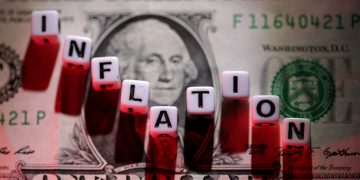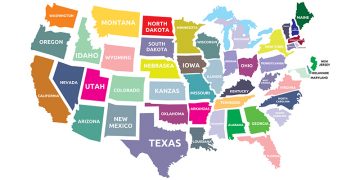What Drives Gasoline Prices?
Across the United States, the expense of gas has been a hotly debated issue of discussion recently, as costs arrive at record-breaking highs.
The public typical now sits at $5.00 per gallon, and toward the finish of summer, this figure could develop to $6 per gallon, as indicated by gauges by JPMorgan.
Yet, before we can have a comprehension of what’s going on at the siphon, it’s essential to initially understand what key variables impact fuel costs.
This realistic, utilizing information from the U.S. Energy Information Administration (EIA), frames the primary parts that impact fuel costs, giving each element’s corresponding effect on cost.
The Four Main Factors
As per the EIA, there are four fundamental factors that impact the cost of gas:
- Raw petroleum costs (54%)
- Refining costs (14%)
- Taxes (16%)
- Conveyance, and advertising costs (16%)
The greater part of the expense of filling your tank is impacted by the cost of unrefined petroleum. In the interim, the remainder of the cost at the siphon is parted reasonably similarly between refining expenses, showcasing and circulation, and assessments.
How about we check out at each and consider more profundity?
Unrefined petroleum Prices
The most powerful variable is the expense of unrefined petroleum, which is to a great extent directed by the global organic market.
Notwithstanding being the world’s biggest oil maker, the U.S. stays a net merchant of unrefined petroleum, with the larger part coming from Canada, Mexico, and Saudi Arabia. Due to America’s dependence on imports, U.S. gas costs are to a great extent impacted by the worldwide raw petroleum market.
Various international elements can impact the unrefined petroleum market, yet one of the greatest impacts is the Organization of the Petroleum Exporting Countries (OPEC), driven by Saudi Arabia.
Laid out in 1960, OPEC was made to battle the U.S. strength in the worldwide oil market. OPEC sets creation focuses for its 13 parts nations, and by and large, oil costs have been connected to changes in OPEC creation. Today, OPEC nations are answerable for around 60% of globally exchanged petrol.
Refining Costs
Oil should be refined into fuel before it very well may be utilized by buyers, which is the reason refining costs are calculated into the cost of gas.
The U.S. has many processing plants the nation over. The country’s biggest treatment facility, claimed by the Saudi Arabian organization Saudi Aramco, processes around 607,000 barrels of oil each day.
The specific expense of refining differs, contingent upon various factors, for example, the kind of raw petroleum utilized, the handling innovation accessible at the treatment facility, and the fuel necessities in unambiguous pieces of the country.
By and large, the refining limit in the U.S. has not been staying aware of oil interest. A few processing plants shut down all through the pandemic, yet even before COVID-19, the refining limit in the U.S. was falling behind interest. Unimaginably, there haven’t been any shiny new refining offices working in the country starting around 1977.
Taxes
In the U.S., burdens likewise assume a basic part in deciding the cost of gas.
Across America, the typical gas charge is $0.57 per gallon, notwithstanding, that the specific sum varies from one state to another. Here is a glance at the best five states with the most noteworthy gas charges:
| Rank | State | Gas tax (per gallon) |
|---|---|---|
| 1 | California | $0.87 |
| 2 | Illinois | $0.78 |
| 3 | Pennsylvania | $0.77 |
| 4 | Hawaii | $0.77 |
| 5 | New Jersey | $0.69 |
States with high gas burdens normally spend the additional cash on upgrades to their foundation or nearby transportation. For example, Illinois multiplied its gas charges in 2019 as a feature of a $45 billion foundation plan.
California, the state with the most noteworthy duty on gas, is hoping to see a rate increment this July, which will drive gas costs up by around three pennies for every gallon.
Dissemination and Marketing Costs
Ultimately, the expenses of conveyance and advertising affect the cost of gas.
Fuel is ordinarily sent from processing plants to nearby terminals by means of pipelines. From that point, the fuel is handled further to guarantee it meets market prerequisites or nearby government norms.
Corner stores then convey the eventual outcome to the customer. The expense of running a corner store shifts — a few service stations are claimed and worked by brand-name processing plants like Chevron, while others are more limited-size tasks possessed by free vendors.
The large name brands run a ton of promotions. As per Morning Consult, Chevron, BP PLC, Exxon Mobil Corp., and Royal Dutch Shell PLC circulated TV ads in the U.S. in excess multiple times between June 1, 2020, and Aug. 31, 2021.
How Does the Russia-Ukraine Conflict Impact U.S. Gas Prices?
If by some stroke of good luck a small portion of America’s oil comes from Russia, for what reason is the Russia-Ukraine struggle influencing costs in the U.S.?
Since oil is traded on a worldwide items market. Thus, when nations forced sanctions on Russian oil, that put pressure on the worldwide stockpiles, which at last drove up costs.
This supply shock could save costs high for some time except if the U.S. falls into a downturn, which is a developing chance in view of how late information is moving.











































































